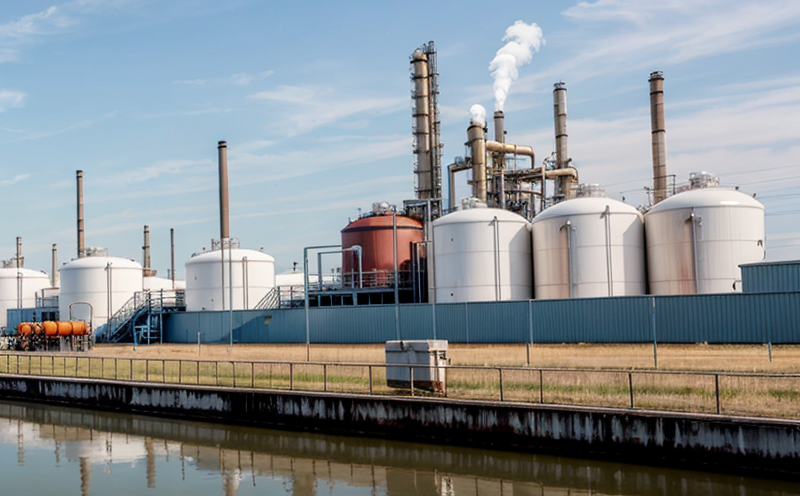CFR 40 Safety Testing of Hazardous Chemicals in Water
The Comprehensive Environmental Response, Compensation, and Liability Act (CERCLA), codified at 40 CFR Part 371, establishes safety standards for hazardous chemicals in water. This service ensures compliance with these stringent requirements by assessing the potential risks posed by chemicals present in water sources.
The testing process involves a series of steps designed to identify and quantify the presence of hazardous substances, ensuring they do not exceed permissible limits as set forth by CERCLA regulations. The primary goal is to protect both human health and the environment from adverse effects caused by chemical contamination.
Our laboratory employs advanced analytical techniques such as High-Performance Liquid Chromatography (HPLC), Gas Chromatography-Mass Spectrometry (GC-MS), Inductively Coupled Plasma Mass Spectrometry (ICP-MS), and other state-of-the-art instrumentation to conduct these assessments. These tools allow us to detect even trace amounts of hazardous chemicals, providing accurate results that are crucial for regulatory compliance.
The process begins with thorough sampling procedures tailored to the specific chemical and its potential environmental pathways. Once collected, samples undergo rigorous preparation steps before being analyzed using the appropriate methods. This ensures consistency across all tests performed in our facility.
Our team of highly skilled chemists and technicians interpret the data generated during analysis against relevant standards like ISO 17025 for quality management systems, ensuring that each result adheres to industry best practices. Compliance reports are then prepared summarizing findings along with recommendations for mitigation actions if necessary.
By offering this service, we aim not only to help clients meet regulatory obligations but also enhance their reputation as responsible stewards of natural resources through transparent reporting and proactive measures against pollution risks.
Applied Standards
The application of specific standards is critical in conducting accurate safety testing according to 40 CFR Part 371. Among these are:
- ISO 17025: Ensures the laboratory operates within internationally recognized quality management practices.
- ASTM D7869: Provides guidelines for analyzing volatile organic compounds in water samples.
- EN ISO/IEC 17025: Aligns with European Union requirements ensuring proficiency and reliability.
We ensure all our tests comply with these rigorous standards, providing clients with peace of mind knowing they are meeting the highest levels of regulatory compliance.
Why Choose This Test
Choosing to conduct safety testing for hazardous chemicals in water under 40 CFR Part 371 offers several advantages:
- Regulatory Compliance: Ensures adherence to federal laws protecting public health and the environment.
- Risk Assessment: Identifies potential risks associated with chemical contamination early on, allowing for preventive actions.
- Data Integrity: Provides reliable data that can be used in decision-making processes related to water resource management.
- Stakeholder Confidence: Builds trust among stakeholders by demonstrating a commitment to environmental responsibility.
The comprehensive approach taken here ensures that businesses operating within regulated industries have robust evidence supporting their compliance efforts, thereby reducing legal risks and enhancing overall operational efficiency.
International Acceptance and Recognition
The tests conducted under 40 CFR Part 371 are widely recognized internationally for their robustness and accuracy. Many countries have adopted similar regulations or standards based on these principles, recognizing the importance of protecting water resources from hazardous chemical contamination.
Our laboratory’s certifications align with global norms such as ISO/IEC 17025, making our findings acceptable not just domestically but also in international markets. This recognition enhances the credibility of your compliance efforts and supports broader sustainability initiatives aimed at preserving aquatic ecosystems worldwide.
By choosing this service, you gain access to a network of globally accepted methodologies that ensure consistency and reliability across different jurisdictions. It serves as an investment in sustainable practices that benefit both current operations and future generations.





